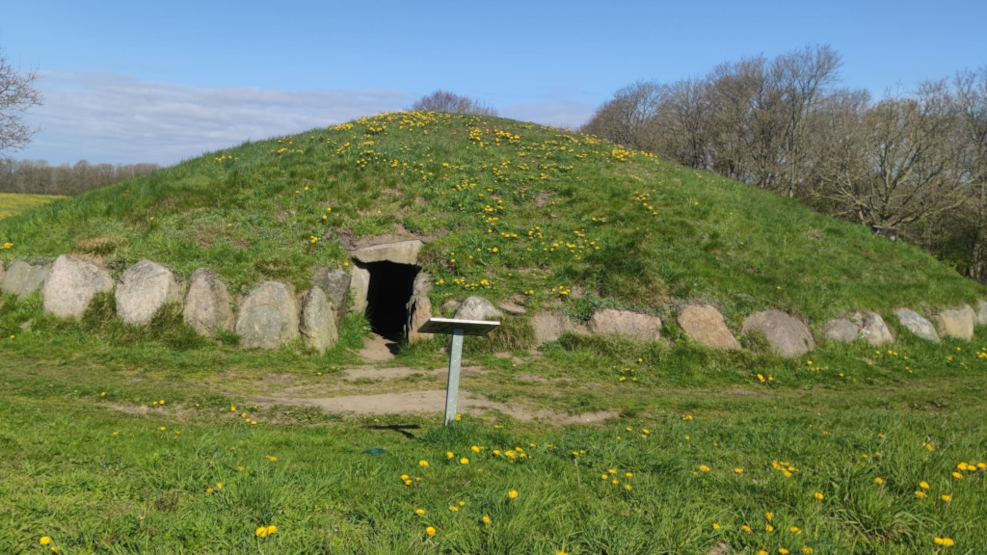
The passage grave Grønhøj
This more than 5000-year-old well-preserved is located passage grave in the nature area Bygholm Lake and Rugballegård Forest in Horsens. The impressive and thought-provoking structure is worth a visit while experiencing the nature – not least for children who love to crawl inside the chamber tomb.
Well-preserved historic attraction in nature
There are more than 500 passage graves scattered around Denmark that have left a lasting imprint on the Danish landscape. There used to be 4.000 of them. The passage graves are more than 5000 years old from the Neolithic Age, but interestingly they were all built within a period of 100 years.
The grave served as a chamber tomb – a burial site shared by a settlement that typically consisted of one extended family. Offerings were made to the deceased outside the grave, including food and drinks. As much as 50.000 potsherds and arrowheads have been found during archeological excavations at a passage grave.
About Grønhøj
How would the buildings of today look in 5000 years? Probably not as well-preserved as Grønhøj. Owing to an excavation and restoration done by the National Museum of Denmark, Grønhøj is one of the most well-preserved passage graves in Denmark.
Grønhøj is a round mound surrounded by an impressive circle of 60 1-metre-tall stones. The chamber itself is relatively small for a Danish passage grave (3.5 x 2.75 metres). The entrance to the tomb is still open and you are allowed to look inside if you are agile enough to get in. But note that it is a historical mound worthy of preservation and avoid damaging the tomb in any way. The mound is approx. 3 metres high and 25 metres wide.
Grønhøj was built with impressing masonry. Between the stone circle and the bearing stones in the tomb there is a drywall made from small tile-like stones. It is possible to see the drywall today and you will be able to see for yourself how much skilled workmanship and precision was required. This wall ensured that the chamber remained dry.
Archaeologists found 7.000 potsherds, clay vessels, spoons, axes, and daggers. Several of these archeological finds can be seen today at Horsens Museum.
How to find Grønhøj
Grønhøj is located between Åbjerg Forest and Rugballegård Forest in open landscape. It is found only 100 metres away from the popular hiking trail around Bygholm Lake. You can vaguely see it from the western part of the southside of the lake. It is the only place on the southside of the lake that you will be able to see open landscape. It is also possible to park your car here in the side of Lovbyvej.
Other historical attractions in the Coastal Land
The Coastal Land offers many interesting historical attractions – from ancient history to industrial history. On this page you can find inspiration for museums, buildings, historical attractions in nature, and much more.